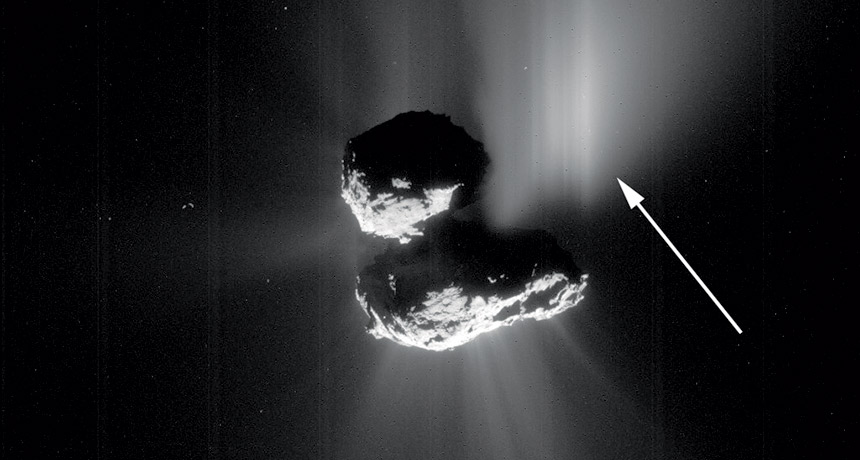Close pass by sun didn’t radically alter comet 67P’s landscape
Despite cliff collapses and other seasonal changes, comet features are old, study says

DUST UP A plume of dust (indicated by arrow) shoots from comet 67P in this image from the Rosetta spacecraft. New data show that a cliff collapsing on the comet’s surface caused the outburst.
NavCam/Rosetta/ESA (CC BY-SA IGO 3.0)







